African Mask Plant, also known as Alocasia african mask, is a stunning tropical plant that boasts large leaves with a unique shape resembling African masks. The leaves are dark green and have prominent veins, growing up to two feet long, making them an ideal statement plant for indoor or outdoor spaces. The plant itself can reach a height of 2-3 feet, with its striking appearance sure to capture the attention of anyone who sees it.
Providing Adequate Light Requirements
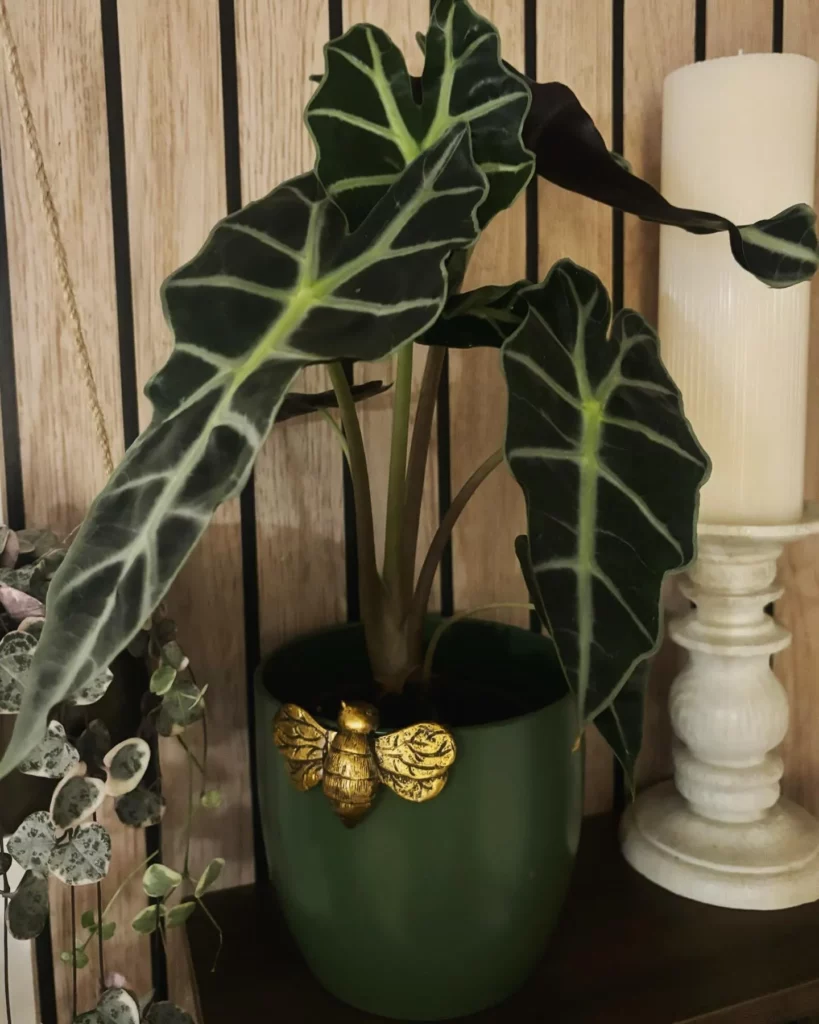
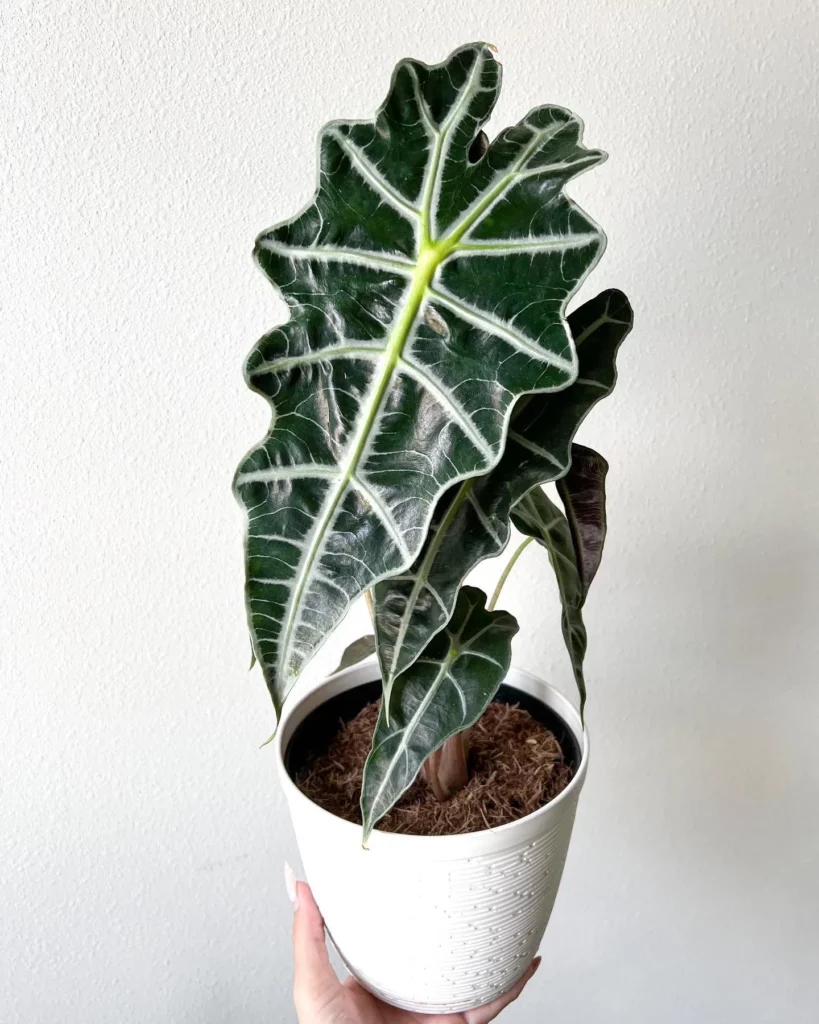

African Mask Plants require bright, indirect sunlight to grow and thrive. Placing the plant near a window with filtered sunlight is ideal for providing the necessary light without exposing it to direct sunlight, which can harm the leaves. If such a location is not available, you can use artificial grow lights to ensure the plant receives the optimal amount of light intensity necessary for growth.
Watering Your African Mask Plant

Proper watering is crucial for the health of your African Mask Plant. It’s important to allow the top inch of the soil to dry out between watering sessions. However, be mindful of not letting the soil completely dry out. These plants prefer consistently moist soil, so water whenever the top inch feels dry to the touch.
When watering your African Mask Plant, it’s crucial to avoid overwatering, as it can cause root rot. Make sure the pot has adequate drainage holes, and water until the water flows out of the drainage holes. Discard the excess water to prevent waterlogging.
A good rule of thumb is to water your African Mask Plant once a week during the growing season (spring and summer). Reduce watering frequency during the dormant period (fall and winter) when the plant’s growth slows down.
Fertilizing to Promote Growth
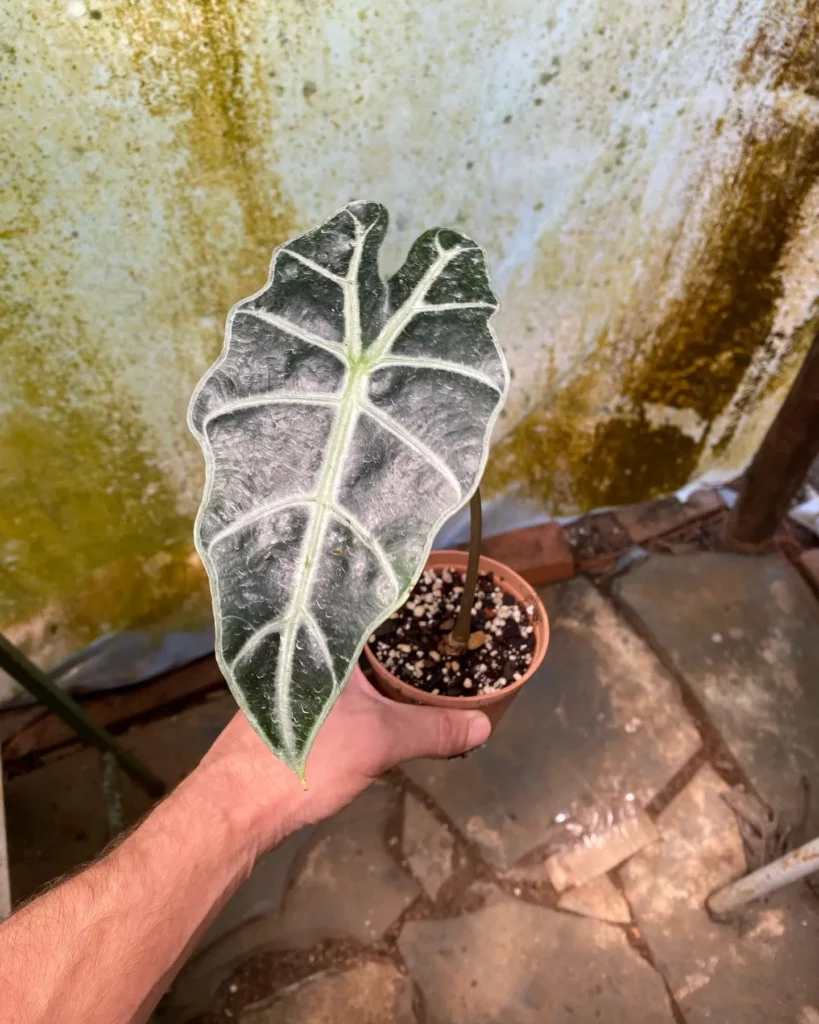
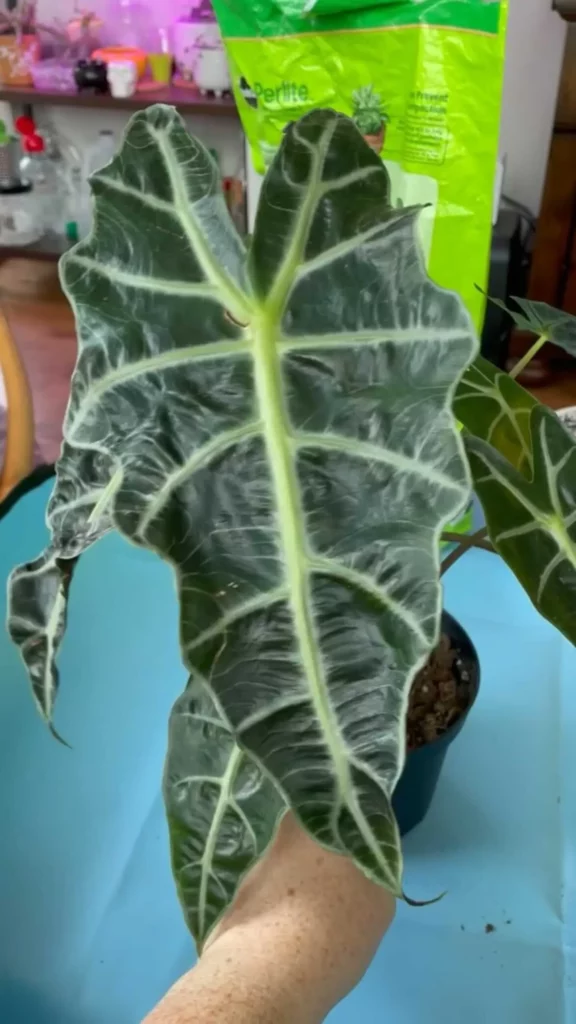

African Mask Plants can thrive with proper fertilization. Using a balanced, water-soluble fertilizer, such as 10-10-10 or 20-20-20, diluted to half-strength, can help support the healthy growth of your plant. During the growing season in spring and summer, apply fertilizer to your African Mask Plant once a month. Decrease or stop fertilizing during the dormant period in fall and winter, when the plant’s growth slows down.
Feeding your African Mask Plant supports essential nutrients needed for the plant’s lush foliage. However, it is important not to over-fertilize the plant as this can lead to leaf burn or stunted plant growth. Follow proper dosing recommendations for optimal growth and to keep your African Mask Plant looking its best.
Potting Your African Mask Plant
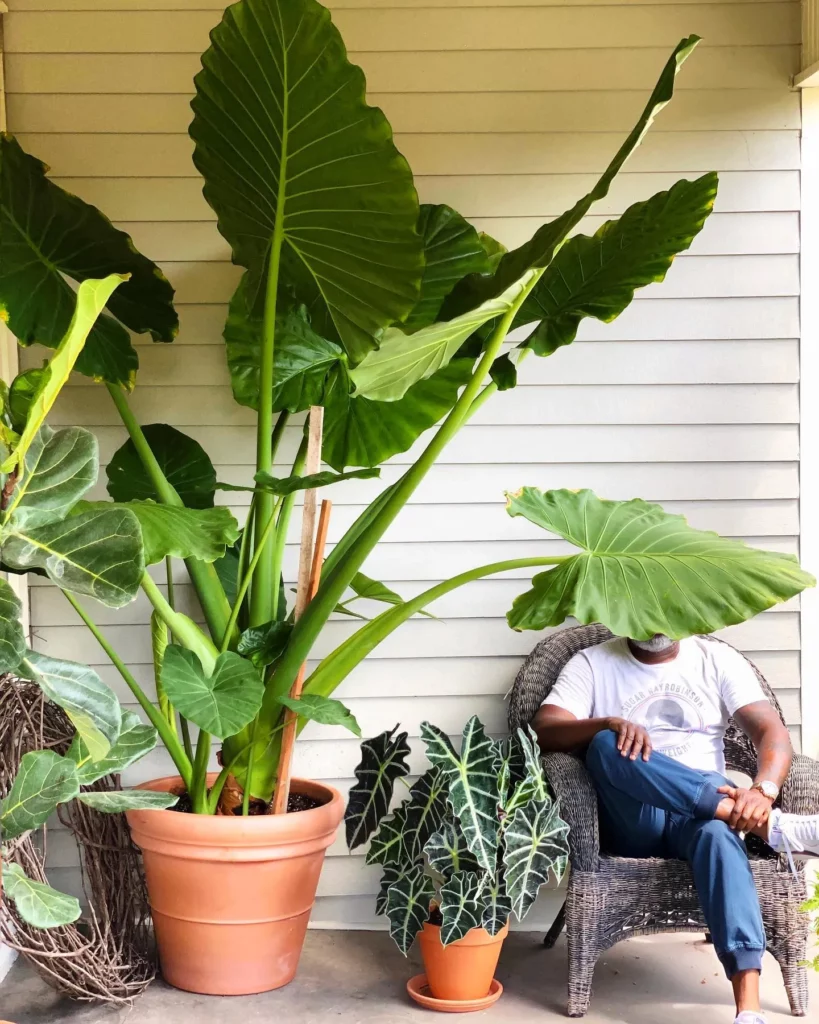
If you want to keep your African Mask Plant thriving, you need to repot it every 1-2 years. When you see its roots growing out the drainage holes, it’s time to move your plant to a larger container.
Choose a pot that has good drainage, preferably with several drainage holes, to avoid waterlogging. Use well-draining soil mix, such as a blend of peat moss, perlite, and potting soil to guarantee proper drainage and aeration.
Be gentle while repotting your African Mask Plant and avoid damaging the roots. Remove the plant from the old container and gently disentangle the roots using your fingers. Place the plant in the new pot, add soil to cover its roots, and press down gently to secure the base.
Ensure that the new pot is only slightly larger than the previous one to prevent over-potting, which can cause the soil to retain too much moisture, leading to root rot.
Now you have successfully repotted your African Mask Plant and created a favorable environment for it to grow. Remember to water it properly and provide sufficient light for optimal growth.
Propagating Your African Mask Plant
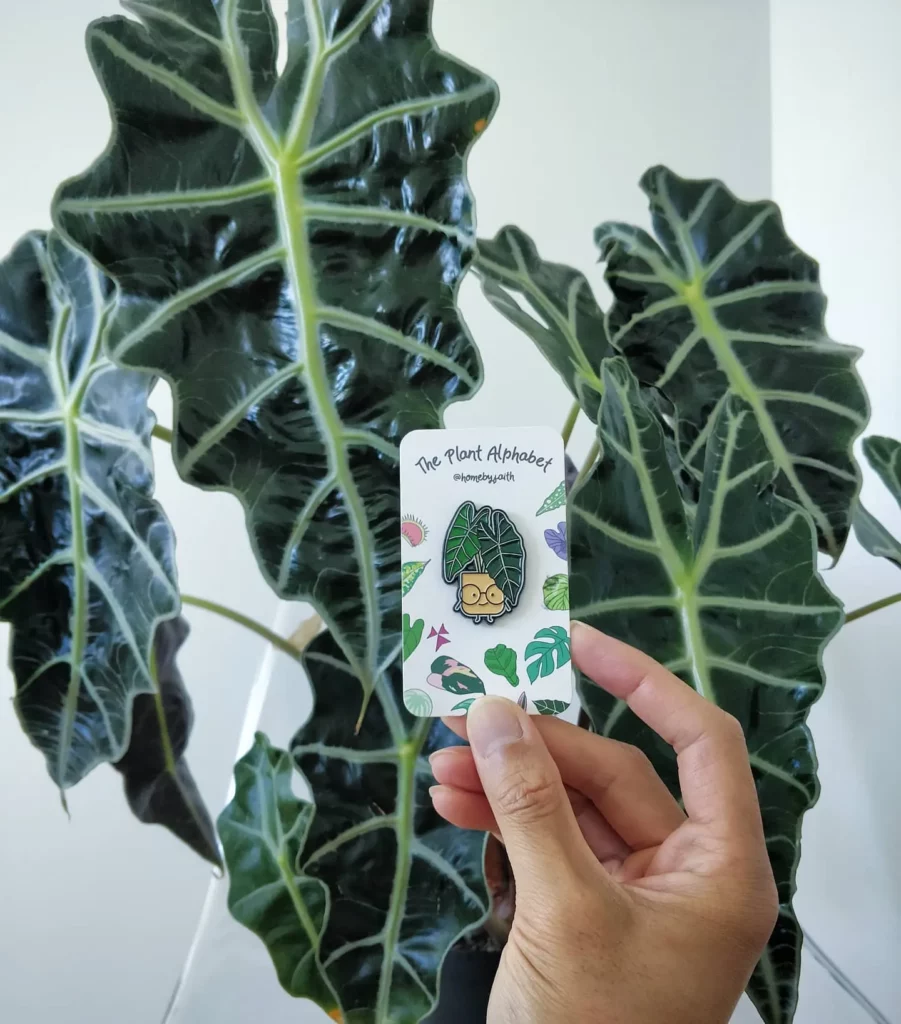
Do you want to multiply your African Mask Plant? You can propagate this striking plant either through division or stem cuttings. For division, gently separate the offsets or rhizomes from the main plant and plant them in separate pots, being careful not to damage the roots. With stem cuttings, select a healthy stem with a few leaves and root it in a well-draining soil mix. Keep the soil moist and add warmth and humidity to encourage successful propagation.
Propagating your African Mask Plant can be a fun and rewarding way to expand your collection of these captivating plants. With a little patience and care, you can have several thriving plants to enjoy in no time.
Growth and Development of African Mask Plant
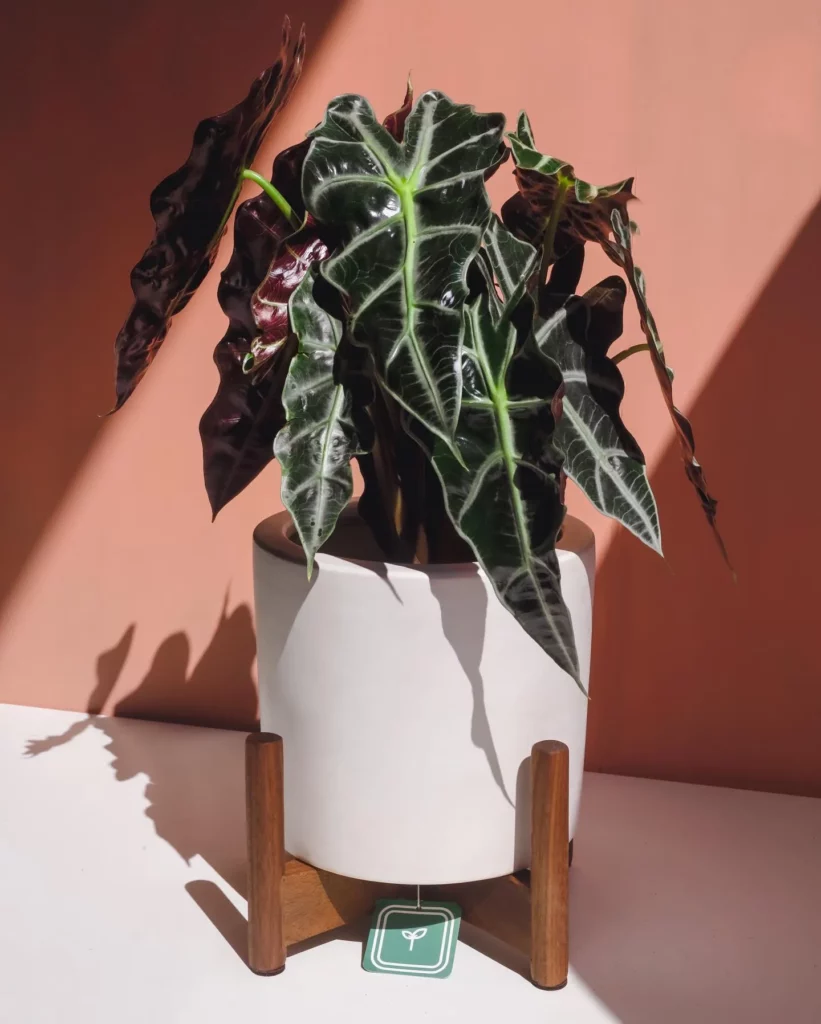
African Mask Plants are known to grow quickly under the right conditions. As new leaves emerge from the center of the plant, they gradually increase in size, enhancing the overall visual appeal of the plant. It’s normal for the leaves to eventually turn yellow and die off, so there’s nothing to be worried about if you see that happening. Regular pruning of the dead or yellowing leaves will help channel the plant’s energy towards new growth, ensuring a healthy and attractive plant.
With a little attention and care, you can watch your African Mask Plant develop its unique shape and color, adding to the beauty and charm of your indoor or outdoor space.
Dealing with Pests and Diseases

If you own an African Mask Plant, it’s important to keep an eye out for potential pest and disease issues. Common pests that may affect your plant include aphids, mealybugs, and spider mites. Should you notice any infestations, treat them promptly with organic insecticidal soap or neem oil for effective results.
Alongside pest issues, African Mask Plants are also prone to certain diseases such as root rot and bacterial leaf spot. To prevent such problems, ensure you don’t overwater your plant and maintain proper air circulation by keeping it away from any areas that trap moisture.
Enhancing Your African Mask Plant’s Environment
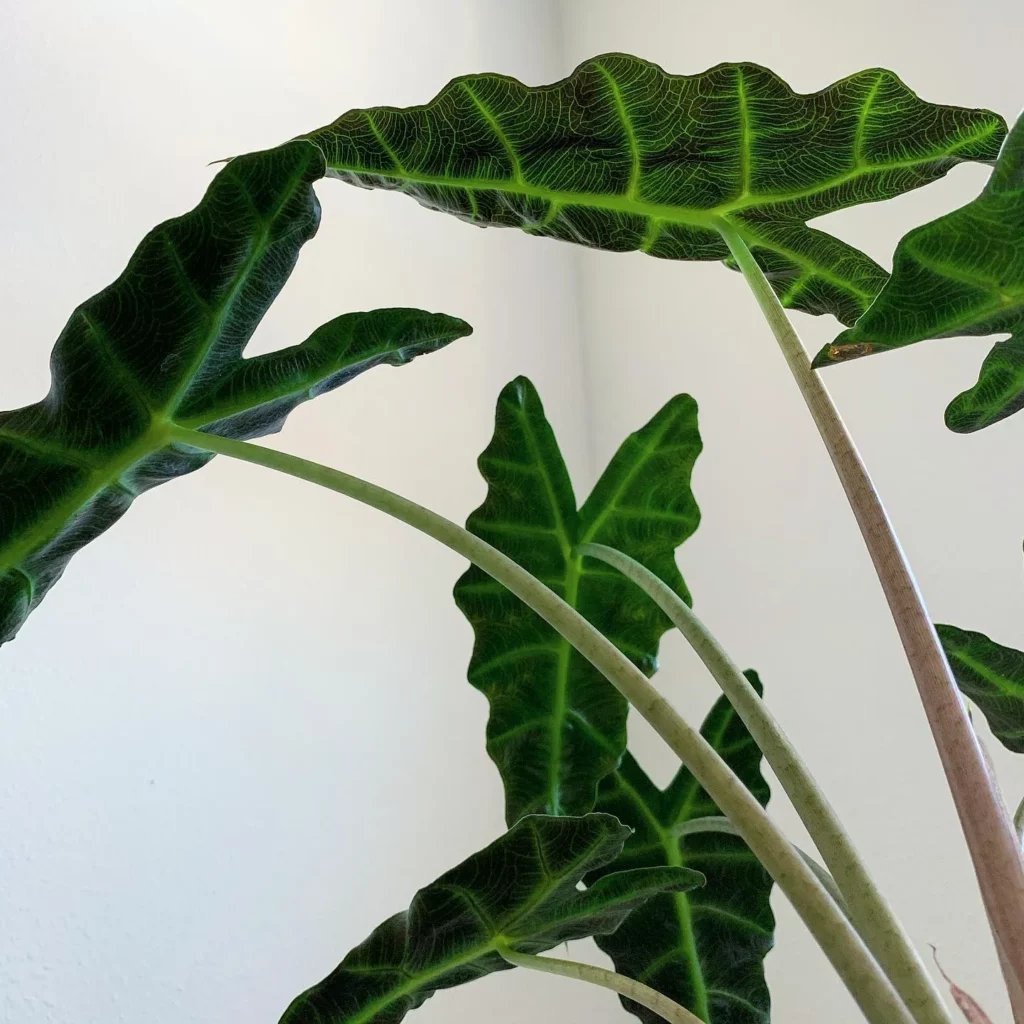
If you want your African Mask Plant to thrive, it’s crucial to provide an environment that mimics its native tropical habitat. These plants prefer warm and humid conditions, so misting the leaves regularly with water can help increase humidity, particularly during dry seasons or in centrally heated spaces. Grouping multiple plants together can create a microclimate that fosters healthy growth, and placing a humidity tray near your plant can maintain moisture levels. A humidity tray is easily created by placing a layer of pebbles in a shallow tray and filling it with water, making sure the water level doesn’t touch the bottom of the pot. The rocks increase the surface area the water can evaporate from, raising the humidity around the plant.
African Mask Plant: A Striking Addition to Your Space
Looking for a unique and captivating addition to your home or office? Look no further than the African Mask Plant! With its large, striking leaves resembling the shape of African masks, this plant is sure to turn heads and spark conversation.
Not only does it look beautiful, but the African Mask Plant is also relatively low-maintenance, making it an excellent choice for plant enthusiasts of all levels. With proper care, it can grow up to 2-3 feet tall, adding height and dimension to any indoor or outdoor space.
If you are thinking about adding an African Mask Plant to your collection, be sure to follow the tips and tricks outlined in our comprehensive guide to ensure it thrives in its new environment. With a little bit of care and attention, you’ll be able to enjoy the impressive beauty of this unique plant for years to come.
So why wait? Add an African Mask Plant to your space and watch as it transforms into a stunning centerpiece that will bring joy and vibrancy to your surroundings.
FAQ
How can I identify an African Mask Plant?
African Mask Plants, scientifically known as Alocasia african mask, have large, dark green leaves with prominent veins that resemble African masks. The leaves can grow up to 2 feet long, and the plant itself can reach a height of 2-3 feet. It’s a visually captivating plant.
What light conditions do African Mask Plants require?
African Mask Plants thrive in bright, indirect light. Place your plant near a window with filtered sunlight to ensure it receives an optimal amount of light without being exposed to direct sunlight, which can harm its leaves. If you don’t have a suitable window, consider using artificial grow lights.
How often should I water my African Mask Plant?
Proper watering is essential for the health of your African Mask Plant. Allow the top inch of the soil to dry out between watering sessions, but don’t let the soil completely dry out. These plants prefer consistently moist soil, so water whenever the top inch feels dry to the touch. Avoid overwatering to prevent root rot.
How should I fertilize my African Mask Plant?
African Mask Plants benefit from regular fertilization to support their growth. Use a balanced, water-soluble fertilizer with a ratio of 10-10-10 or 20-20-20, diluted to half-strength, once a month during the growing season (spring and summer). Reduce or stop fertilizing during the dormant period (fall and winter).
How do I pot my African Mask Plant?
African Mask Plants need to be repotted every 1-2 years as they outgrow their current containers. Choose a pot with good drainage and use a well-draining soil mix, such as a blend of peat moss, perlite, and potting soil. Be gentle with the plant’s delicate roots during repotting and ensure the new pot is only slightly larger than the previous one.
How can I propagate my African Mask Plant?
African Mask Plants can be propagated through division or stem cuttings. To divide the plant, carefully separate the offsets or rhizomes from the main plant and replant them in separate pots. For stem cuttings, take a healthy stem with a few leaves and root it in a well-draining soil mix. Provide the right conditions of warmth and humidity for successful propagation.
How does an African Mask Plant grow and develop?
African Mask Plants can grow rapidly under optimal conditions. New leaves unfurl from the center of the plant, gradually increasing in size. It’s normal for older leaves to yellow and die off. Regular pruning of dead or yellowing leaves helps redirect the plant’s energy towards new growth.
What pests and diseases should I watch out for with my African Mask Plant?
African Mask Plants can be susceptible to pests like aphids, mealybugs, and spider mites. Treat any infestations promptly using organic insecticidal soap or neem oil. Common diseases include root rot and bacterial leaf spot, which can be avoided by avoiding overwatering and maintaining proper air circulation.
How can I enhance the environment for my African Mask Plant?
African Mask Plants prefer warm and humid environments. Mist the leaves regularly to increase humidity, especially during dry seasons or in centrally heated spaces. You can also group multiple plants together to create a microclimate or place a humidity tray near your plant to maintain moisture levels.
How can an African Mask Plant enhance my space?
With its striking appearance and unique foliage, the African Mask Plant can be a stunning addition to your home or office. Its vibrant green leaves and sculptural form make it a real conversation piece. By following the tips and tricks outlined in this guide, you’ll be able to provide the care necessary to keep your African Mask Plant thriving and enjoying its captivating beauty for years to come.












